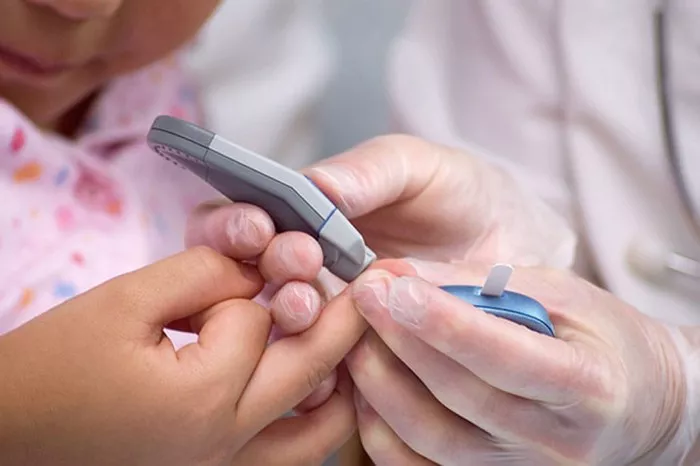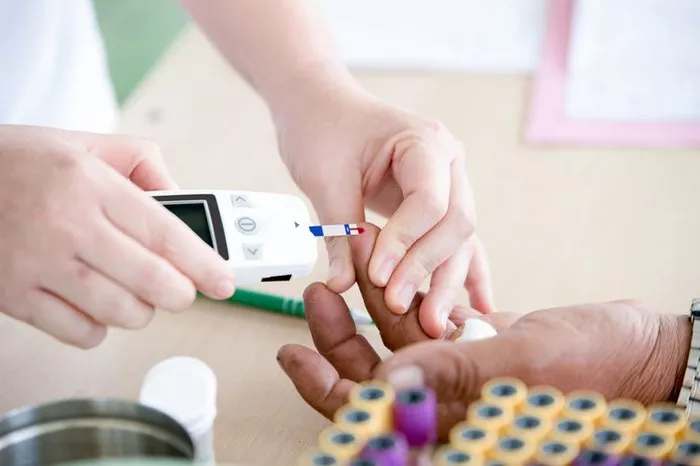Hyperglycemia, or elevated blood glucose levels, is a common condition in diabetes that can have profound effects on various systems in the body. One of the critical physiological impacts of hyperglycemia is its role in inducing vasoconstriction, the narrowing of blood vessels. This phenomenon can significantly affect cardiovascular health and contribute to the complications associated with diabetes. Understanding the mechanisms behind this relationship is crucial for managing diabetes and preventing its long-term complications.
This comprehensive article explores the reasons why hyperglycemia causes vasoconstriction, including the underlying biochemical pathways, the role of endothelial dysfunction, and the clinical implications for individuals with diabetes. By delving into these aspects, we aim to provide a detailed overview of how elevated blood glucose levels influence vascular function and contribute to cardiovascular disease.
The Connection Between Hyperglycemia and Vasoconstriction
Hyperglycemia affects the cardiovascular system in several ways, including promoting vasoconstriction. Vasoconstriction is the process by which blood vessels narrow, reducing blood flow and increasing blood pressure. This response is mediated by various factors, including changes in the endothelium, increased oxidative stress, and alterations in the balance of vasoactive substances.
1. Endothelial Dysfunction
The Role of Endothelial Cells in Vasoregulation
The endothelium is a thin layer of cells lining the blood vessels, playing a critical role in maintaining vascular homeostasis. It regulates vasodilation and vasoconstriction by producing and releasing various vasoactive substances, such as nitric oxide (NO), prostacyclin, and endothelin-1.
Nitric Oxide (NO): NO is a potent vasodilator produced by endothelial cells. It helps to relax smooth muscle cells in the blood vessels, leading to vasodilation. In hyperglycemic conditions, the production and availability of NO are impaired, contributing to reduced vasodilation and increased vasoconstriction.
Endothelin-1: Endothelin-1 (ET-1) is a potent vasoconstrictor produced by endothelial cells. Elevated glucose levels can enhance the synthesis and release of ET-1, leading to increased vasoconstriction.
Prostacyclin: Prostacyclin is another vasodilatory substance produced by the endothelium. Hyperglycemia can reduce prostacyclin production, further promoting vasoconstriction.
2. Oxidative Stress and Inflammation
How Oxidative Stress Contributes to Vasoconstriction
Oxidative stress is a condition characterized by an imbalance between the production of reactive oxygen species (ROS) and the body’s ability to neutralize them with antioxidants. Hyperglycemia significantly increases oxidative stress, which can damage endothelial cells and disrupt their normal function.
Reactive Oxygen Species (ROS): Elevated blood glucose levels increase the production of ROS, which can impair endothelial function and reduce NO bioavailability. ROS can also activate inflammatory pathways that contribute to vascular dysfunction.
Inflammation: Chronic inflammation associated with hyperglycemia can lead to endothelial cell activation and the expression of adhesion molecules, promoting the infiltration of inflammatory cells into the vessel wall. This process exacerbates endothelial dysfunction and enhances vasoconstriction.
3. Alterations in Vasoactive Substances
The Impact of Hyperglycemia on Vasoactive Mediators
Hyperglycemia affects the balance of vasoactive substances, leading to an increase in vasoconstrictive signals and a decrease in vasodilatory signals.
Increased Vasoconstrictors: Hyperglycemia can increase the production of vasoconstrictors such as ET-1 and angiotensin II. These substances act directly on smooth muscle cells to induce vasoconstriction and elevate blood pressure.
Decreased Vasodilators: As mentioned earlier, hyperglycemia reduces the availability of NO and prostacyclin, which are critical for promoting vasodilation. This imbalance between vasoconstrictors and vasodilators leads to overall vasoconstriction.
4. Insulin Resistance and Endothelial Function
The Relationship Between Insulin Resistance and Vasoconstriction
Insulin resistance, a hallmark of Type 2 diabetes, can also contribute to endothelial dysfunction and vasoconstriction. Insulin has direct effects on the endothelium, including promoting NO production and enhancing vasodilation.
Insulin’s Role: In a healthy state, insulin stimulates endothelial cells to produce NO, which helps to maintain vascular tone. In insulin-resistant states, this effect is diminished, leading to reduced NO production and increased vasoconstriction.
Hyperinsulinemia: In individuals with Type 2 diabetes, elevated insulin levels due to insulin resistance can further disrupt the balance of vasoactive substances, contributing to endothelial dysfunction and vasoconstriction.
5. Glycation and Advanced Glycation End-products (AGEs)
How Glycation Impacts Vascular Health
Glycation is a process in which glucose molecules bind to proteins, lipids, and nucleic acids, forming advanced glycation end-products (AGEs). AGEs can have detrimental effects on vascular health and contribute to vasoconstriction.
AGE Formation: Elevated blood glucose levels promote the formation of AGEs, which can accumulate in the vascular walls and contribute to endothelial dysfunction. AGEs can also activate inflammatory pathways and increase oxidative stress.
AGE Receptors: AGEs interact with specific receptors, known as RAGE (Receptor for Advanced Glycation End-products), on endothelial cells. This interaction can trigger inflammatory responses and contribute to vasoconstriction.
Clinical Implications of Hyperglycemia-Induced Vasoconstriction
The vasoconstrictive effects of hyperglycemia have several clinical implications, particularly in the context of cardiovascular health and diabetes-related complications.
1. Increased Risk of Cardiovascular Disease
How Vasoconstriction Contributes to Cardiovascular Risk
Chronic vasoconstriction can lead to increased blood pressure and contribute to the development of atherosclerosis, a condition characterized by the buildup of plaque in the arteries. This, in turn, increases the risk of cardiovascular events such as heart attacks and strokes.
Hypertension: Persistent vasoconstriction results in elevated blood pressure, a major risk factor for cardiovascular disease. Individuals with diabetes are already at an increased risk of hypertension, and hyperglycemia exacerbates this risk.
Atherosclerosis: The process of atherosclerosis is accelerated by endothelial dysfunction and inflammation. Hyperglycemia-induced vasoconstriction can contribute to the development and progression of atherosclerotic plaques.
2. Impact on Microvascular Complications
The Effect of Vasoconstriction on Microvascular Health
In addition to its impact on macrovascular health, hyperglycemia-induced vasoconstriction also affects the microvascular system, leading to complications such as retinopathy, nephropathy, and neuropathy.
Diabetic Retinopathy: Vasoconstriction in the retinal blood vessels can lead to reduced blood flow and oxygen supply, contributing to the development of diabetic retinopathy. This condition can cause vision loss and blindness if left untreated.
Diabetic Nephropathy: In the kidneys, vasoconstriction can reduce blood flow to the glomeruli, impairing their function and contributing to the development of diabetic nephropathy. This condition can progress to kidney failure if not managed effectively.
Diabetic Neuropathy: Reduced blood flow to the nerves due to vasoconstriction can contribute to diabetic neuropathy, a condition characterized by nerve damage and pain. This can lead to symptoms such as numbness, tingling, and increased risk of foot ulcers.
3. Management Strategies
Approaches to Mitigate the Effects of Hyperglycemia on Vasoconstriction
Managing hyperglycemia effectively is crucial for mitigating the effects of vasoconstriction and reducing the risk of associated complications. Several strategies can help achieve this goal:
Blood Glucose Control: Maintaining optimal blood glucose levels through lifestyle modifications, medications, and insulin therapy can help reduce oxidative stress, endothelial dysfunction, and the formation of AGEs.
Antioxidants and Anti-inflammatory Agents: Incorporating antioxidants and anti-inflammatory agents into the diet or as supplements may help reduce oxidative stress and inflammation, supporting better vascular health.
Blood Pressure Management: Controlling blood pressure through lifestyle changes and antihypertensive medications can help reduce the risk of cardiovascular disease and complications associated with vasoconstriction.
Regular Monitoring: Regular monitoring of blood glucose levels, blood pressure, and lipid profiles is essential for managing diabetes and preventing complications related to vasoconstriction.
See also: What is the Pathogenesis of Type 1 Diabetes?
Conclusion
Hyperglycemia induces vasoconstriction through a complex interplay of factors, including endothelial dysfunction, oxidative stress, alterations in vasoactive substances, and the effects of insulin resistance. This vasoconstriction contributes to increased blood pressure, accelerated atherosclerosis, and a higher risk of cardiovascular and microvascular complications.
Understanding the mechanisms by which hyperglycemia causes vasoconstriction is crucial for developing effective management strategies to reduce the risk of these complications. By focusing on blood glucose control, antioxidant and anti-inflammatory therapies, and regular monitoring, individuals with diabetes can mitigate the adverse effects of hyperglycemia on vascular health and improve their overall well-being.
Related topics:
What Causes Non Diabetic Hypoglycemia



























